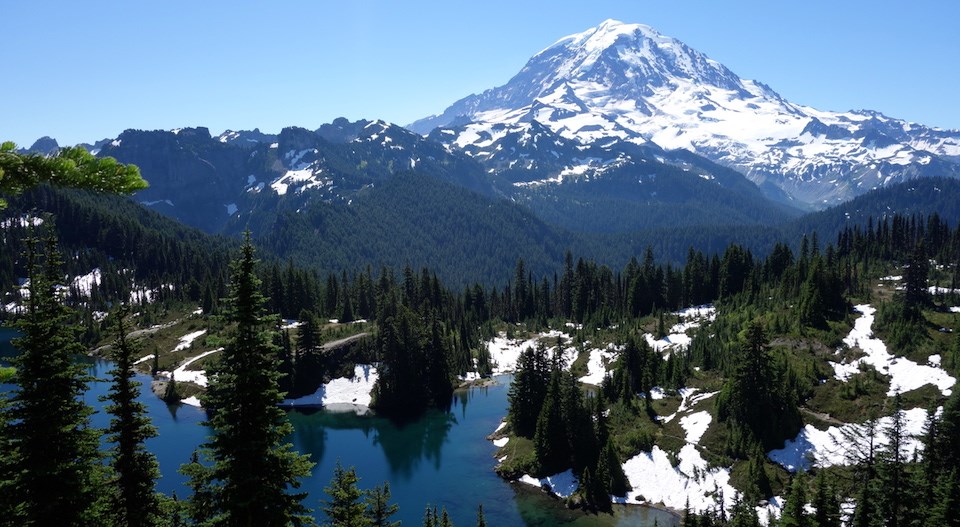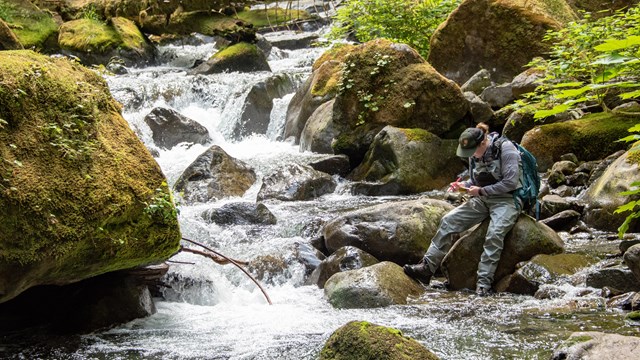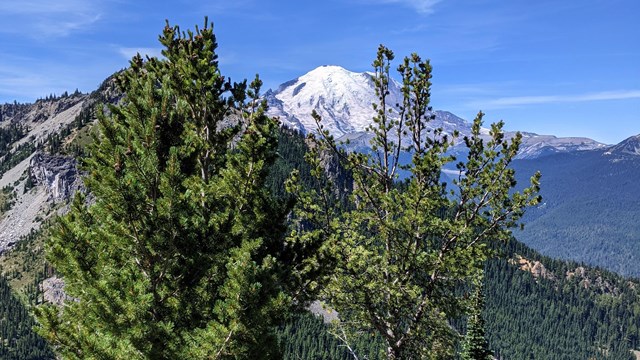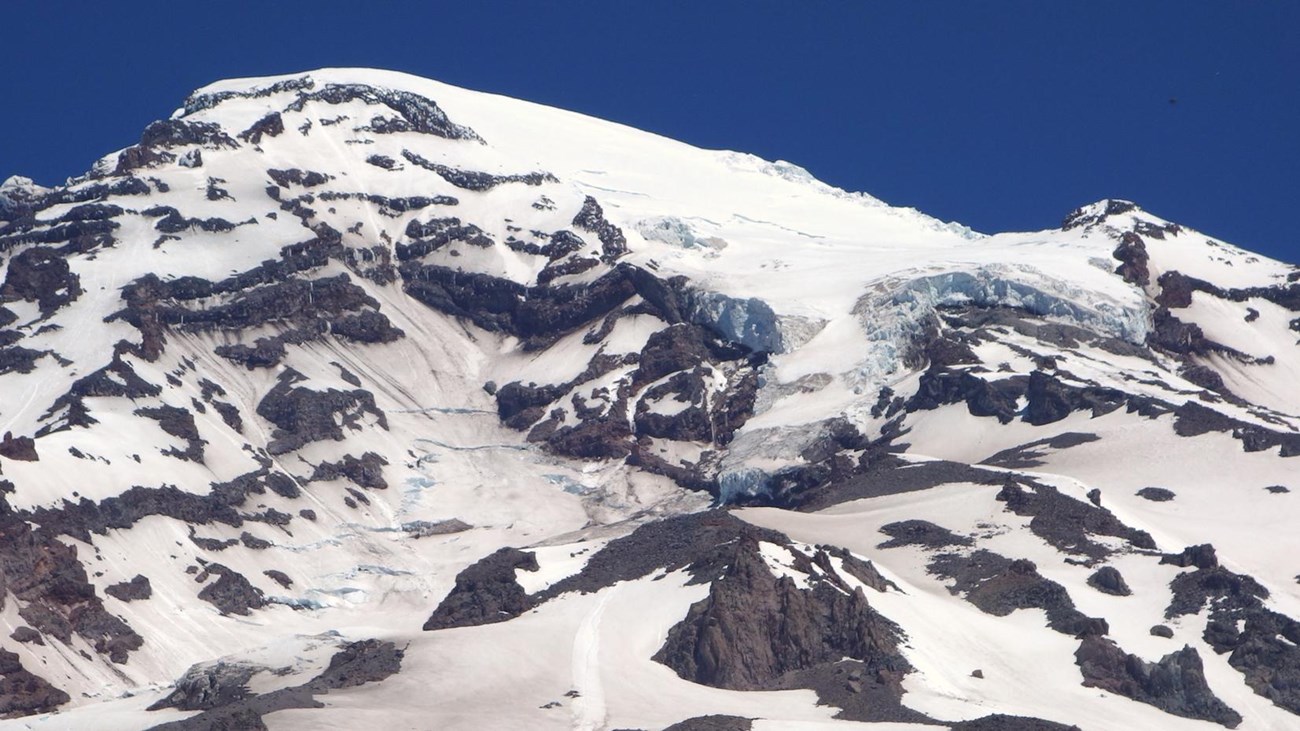
NPS Photo Mount Rainier's Wilderness: A Defense against Climate ChangeMore than 97 percent of Mount Rainier National Park is legally designated as wilderness, which includes glaciers, forests, meadows, lakes, and other wetlands. While enduring impacts from climate change, wilderness is also recognized as a strong defense against it. In 1964, when Congress approved the Wilderness Act, climate change was not yet recognized as a major threat. Fifty years later, scientists around the world and here at Mount Rainier have identified impacts of climate change on wilderness and ultimately our life on earth. The Wilderness Act defines wilderness as an area where Earth and its community of life are "untrammeled by man," but the Act also requires that managers preserve and protect wilderness in its natural condition. To help anticipate the advancing effects of climate change, scientists look to the past. Much of our knowledge about prior climates has come from old trees, wood, and pollen cores that increasingly can be found only in undisturbed wilderness lands. Trees, aside from providing shade and cool, absorb and lock away carbon dioxide in the wood, roots, and leaves. A forest keeps carbon from becoming available as a "greenhouse" gas that raises the Earth's temperature. Much of Mount Rainier's wilderness is subalpine and alpine environments. The boundary between these is controlled by extremes in temperature, moisture, and wind. Changes to any of these extremes affect the annual snowpack which eventually impacts the long-lived vegetation in both ecosystems. An upward movement of the subalpine treeline would shrink the alpine tundra causing a possible loss of both plant and animal species. Glaciers found in Mount Rainier's wilderness provide storage and the slow release of cool waters during summer. Changes in temperature affect the timing of this release, resulting in warmer summer streams. Warmer water may not be suitable for native bull trout and tailed frogs that are dependent upon cold headwater streams. Wilderness, due to its large acreage and elevation range, provides for some species to adapt to climate change. As temperatures increase and ecosystems change, wildlife species will migrate, looking for suitable environments. Several animals inhabiting subalpine and alpine environments in the park are vulnerable to changes in climate including the Cascade red fox, white-tailed ptarmigan, and pika. As Mount Rainier's wilderness defends against climate change, it will potentially suffer many impacts. Air pollutants, such as mercury, may increase in lakes, ponds, and wetlands under warming temperatures. Invasive species may expand and habitats for native species may be fragmented. Competition between species, disease, and disturbance—wildfire, landslides, etc.—may increase. Wilderness, by providing for carbon storage, large acreage, and a broad elevation range, provides important mitigation to climate change impacts but still requires our protection.
Visit our keyboard shortcuts docs for details
Climate change science at Mount Rainier National Park is more than just the study of melting glaciers. How will a changing climate affect rivers and subalpine meadows? Wildlife and visitor access? Scientists are studying climate change in many ways to help guide the future of Mount Rainier National Park. Climate Change at Mount Rainier - Research & ResourcesSource: NPS DataStore Saved Search 2293 (results presented are a subset). To search for additional information, visit the NPS DataStore. 
Climate Change Science: Water
Park scientists are studying the effects of climate change, including river temperatures, fish, amphibians, and other water-related areas. 
Climate Change Science: Meadows & Forest
Park scientists are studying the effects of climate change, including in the wildflower meadows and forests of Mount Rainier. 
Glaciers
Glaciers carve through the landscape of Mount Rainier, fuel the park rivers, and are a measuring stick for climate conditions. |
Last updated: October 22, 2024
